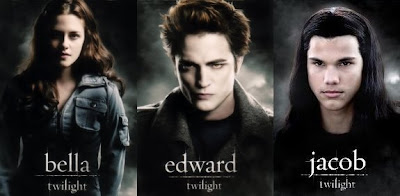If the last two years of a recession weren’t enough to confirm the paucity of financial literacy among teens and young adults, this weekend’s box office for Twilight: Breaking Dawn Part 1 should doubly confirm this epidemic that has prompted the youth to exchange dollars ($139 million as a rough estimate) for movie tickets that open a gateway to an illogical, poorly acted and written cinema experience.
Admittedly, there is a bright side to this: Part 1 of the final installment means that the end is imminent; thus, the end to unnecessary brooding and posturing; the end to Kristen Stewart’s icy acting; the end of Taylor Lautner’s abs as a supporting character (such a prophecy is confirmed by the amazingly bad Abduction that sits steadily at 4% on Rottentomatoes.com). On the other hand, the downside to this upside is that an equal number of Twihards will flock to the equally deplorable Twilight: Breaking Dawn Part 2: Cha-Ching! (working title), a movie that promises to equal if not surpass the current draw while simultaneously replacing intelligent, cohesive, clever storytelling with exposition and shoddy spectacle.
That said, the overall downsides that gilt the Twilight franchise aptly emphasize the issue of financial literacy, particularly because there are few – if any – redeeming qualities within the story or the film itself.
Let’s start with the illogical, clunky premise about a vampire who can exist in the daylight. The mythology around vampires exists as such to satirize our endemic desire for youth, wealth, and superficial accoutrements. The tradeoff is giving up love. However, truthfully, Twilight elides this, despite the assertion that the elision persists. Their love is forbidden because Stephanie Meyer says it is, not for any logical reason connected to the original mythology. In essence, Edward’s existence as vampire is merely to add the illusion of depth to a love-struck character. The subsequent sacrifices are equally as illusory. The same Walmart-brand narrative fabric could be woven with Sven, the egomaniacal midget with rheumatoid arthritis. If he was in love but couldn’t be because his creator says it’s impossible, Twilight would have found a modicum of success. However, Meyer parlays the romantic fascination kindled by previous vampire tales to construct her story.
Purchasing a film with a shoddy story from a bargain bin at Best Buy is one thing: the five dollars you spend might be an impulse buy, but it’s one that you can re-watch, repeatedly noting how terrible the film is, mocking yourself and others for indulging, perhaps even at a bad-movie-themed party in which you all gather, chatting over the perfunctory plot points and hyperbolic, on-screen emoting. However, travelling to a specified location with the sole intent of purchasing a thirteen-dollar ticket to sit with many others who feign awe before walking out with nothing tangible can be likened to getting a urinary catheterization and colonoscopy simultaneously and then shelling out a fifteen-dollar copay. In both situations, you know what you’re getting into; the former is necessarily forgivable (unless done monthly for pleasure); the latter is fiscally irresponsible and leaves you with nothing tangible other than one half of a ticket stub.
Moreover, the first installment of Breaking Dawn has been critically panned. This is where the obsessive mentality of Harry Potter fans and Twilight fans differ: Harry Potter, while often narratively illogical, has been critically praised, and in its defense stays – for the most part – within the mythology that it’s poaching. And, maybe this makes it better solely because there’s more wiggle room when dealing with wizards and their ilk. Another difference is the quality of actors in the Harry Potter series. It’s unclear where Watson, Radcliffe, and the rest will end up, but they didn’t exist solely as variations on eye candy: the brooding teen girl, the brooding afflicted boy, the brooding afflicted slightly exotic looking boy. (Seriously, look at the image below and tell me the directors didn’t just say, “Okay, brood! Er, I mean, action!”

Acting talent aside, no film in the Potter franchise has fallen below 79% on Rottentomatoes; admittedly, Rottentomatoes is not infallible; they don’t get everything right (See Crash and The Kids Are All Right), but the majority of reputable film critics found the entire Potter franchise palatable. In contrast, none of the Twilight films have topped 49%. If the respective franchises were averaged with its respective kin, Potter would pass with a 72% — not great, but at least it’s a C, and would let each director, actor, and writer move on to the next grade.
On the other hand, Twilight would be perpetually confined to remediation.






